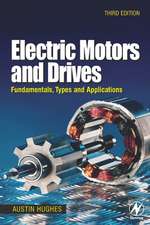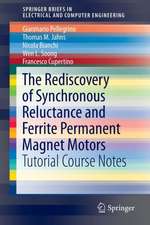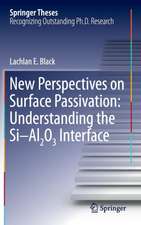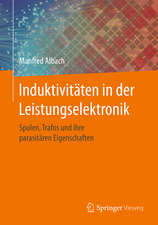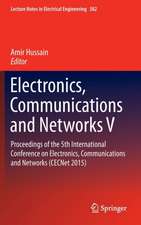Power Electronic Converters: DC-AC Conversion: Electric Energy Systems and Engineering Series
Autor Guy Seguier, Francis Labriqueen Limba Engleză Paperback – 31 mai 2012
Preț: 662.95 lei
Preț vechi: 779.94 lei
-15% Nou
Puncte Express: 994
Preț estimativ în valută:
126.89€ • 136.96$ • 106.39£
126.89€ • 136.96$ • 106.39£
Carte tipărită la comandă
Livrare economică 19 aprilie-03 mai
Preluare comenzi: 021 569.72.76
Specificații
ISBN-13: 9783642503245
ISBN-10: 3642503241
Pagini: 468
Ilustrații: XXI, 444 p. 1 illus.
Dimensiuni: 210 x 279 x 30 mm
Greutate: 1.04 kg
Ediția:1993
Editura: Springer Berlin, Heidelberg
Colecția Springer
Seria Electric Energy Systems and Engineering Series
Locul publicării:Berlin, Heidelberg, Germany
ISBN-10: 3642503241
Pagini: 468
Ilustrații: XXI, 444 p. 1 illus.
Dimensiuni: 210 x 279 x 30 mm
Greutate: 1.04 kg
Ediția:1993
Editura: Springer Berlin, Heidelberg
Colecția Springer
Seria Electric Energy Systems and Engineering Series
Locul publicării:Berlin, Heidelberg, Germany
Public țintă
ResearchCuprins
1 Introduction and Presentation.- 1.1 Types of Inverters: Principles.- 1.2 Types of Semiconductor Devices. Supply and Load Imperfections. Filters.- 1.3 Principal Applications. Consequences on the Study.- 2 Voltage-Source Inverters with One Square-Pulse per Half-Cycle.- 2.1 Single-Phase Inverter with Centre-Tapped Transformer.- 2.2 Single-Phase Half-Bridge Inverter.- 2.3 Single-Phase Full-Bridge Inverter.- 2.4 Three-Phase Full-Bridge Inverter.- 2.5 Input Filter.- 2.6 Output Filter.- 3 Pulse-Width-Modulated Voltage-Source Inverters.- 3.1 Single-Phase Half-Bridge Inverter.- 3.2 Three-Phase Full-Bridge Inverter.- 3.3 Single-Phase Full-Bridge Inverter.- 3.4 Computed Modulation.- 4 Commutations in Voltage-Source Inverters.- 4.1 Commutation of the Bipolar Transistor in Full-Wave Inverters.- 4.2 Commutations of the Bipolar Transistor in PWM Inverters.- 4.3 GTO Thyristor Commutations.- 4.4 Field Effect Transistor Commutations.- 5 Current-Source Inverters.- 5.1 Single-Phase Inverters.- 5.2 Full-Bridge Three-Phase Inverter.- 5.3 Feeding an Inductive Load.- 5.4 Notes on the Configurations with a Pulse Number Greater than 6.- 5.5 Notes on the Computation of the Current-Source Inverter Input Filter.- 6 Resonant Inverters.- 6.1 Series Resonant Inverter.- 6.2 Parallel Resonant Inverter.- 6.3 Resonant Supplies.- Appendices.- Appendix A: Input Filter in Voltage-Source Inverters.- A.1 Inverters with Two “Switches” per Phase.- A.2 Full-Bridge Single-Phase Inverter.- Appendix B: “Sinusoidal” Voltage-Source Inverters.- B.1 Voltage Waveform.- B.2 Production of Optimized Waveforms.- B.3 Variation in the Output Voltage.- B.4 The most Usual Type of Configuration.- Appendix C: Forced Turn-Off of Thyristors in Voltage-Source Inverters.- C.1 Parallel Commutation by Oscillating Circuit.- C.2Parallel Commutation by Capacitor.- C.3 Series Commutation.- Appendix D: PWM Rectifier.- D.1 The Structure.- D.2 The Converter Alone.- D.3 The Converter and its Input Filter.- D.4 The Converter with its Input and Output Filters.- Appendix E: Use of the Four-Quadrant Chopper as a PWM Rectifier.- E.1 “Switch” Control.- E.2 Current Harmonics Taken from the Supply.






